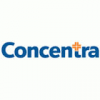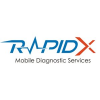The Radiology Technologist is responsible high quality diagnostic digital x-ray images with special attention to radiation / safety regulations, including proper documentation and techniques.
Responsible for ensuring effective communication with customers, including radiologists as necessary. As applicable may assist in training new technologists and / or Patient Coordinators.
Specific duties include, but are not limited to :
Produces high quality diagnostic x-ray images. Special attention to radiation safety / regulations, including proper documentation and technique when working with patients and radioactive materials.
Responsible for patient safety, including pre-screening for contra-indications, aseptic injection technique etc.
Effectively communicates with customers and radiologists.
May train new Radiologic Technologists and / or PC’s.
Trouble-shoots the X-ray unit and all peripheral equipment (including : computers, PACS, etc.).
Position Requirements :
High School Diploma or equivalent experience required; Associate's Degree or equivalent experience preferred.
ARRT (R) and state license, if applicable required.
CPR certification required.
As applicable, valid state driver’s license.
Team Members working in a fixed setting :
Successful completion of a Radiology School.
Ability to work at several locations.
Strong customer service skills.
Organizational and multi-tasking skills.
Basic knowledge of computer applications and programs.
Team Members working in a mobile setting :
A minimum of one year radiography or digital x-ray experience required preferred.
Local travel may be required.
The COVID-19 vaccination is / may be a condition of employment.
All candidates who accept an offer for employment will be required to successfully complete a pre-employment background check and drug screen as a condition of employment.
Physical Requirements :
The employee may be exposed to outside weather conditions during transport of patients if working on a mobile unit, radiation, blood / body fluids and infectious disease.
More than 50% of the time :
Sit, stand, walk.
Repetitive movement of hands, arms and legs.
See, speak and hear to be able to communicate with patients.
Less than 50% of the time :
Stoop, kneel or crawl.
Climb and balance.
Carry and lift (ability to move non-ambulatory patients from a sitting or lying position for transfer or to exam).








